On an evening in August, artist crystal bi walked barefoot along the muddy shore and into the water just before sunset at Carson Beach in Boston.
bi and four others were carrying a bamboo structure in and out of the water. They built the cube-shaped piece over the course of the day. Roughly 8 feet on each side, it had translucent, tea green tapestries that blew in the wind. Buoys fixed to the bottom allowed it to float on the water’s surface.
“It’s a way to honor the ancestors,” said bi. “Water is seen as a portal to the ancestors.”
The floating structure reflects designs featured in the Ghost Festival in Taiwan, where her family is from. For bi, the similarities signified a deeper connection. “The Ghost Festival was something that I found out about after doing the first iteration of the float,” she said. “It felt like that vision was something that was passed down to me and it’s something that’s in communication with my ancestors from Taiwan.”
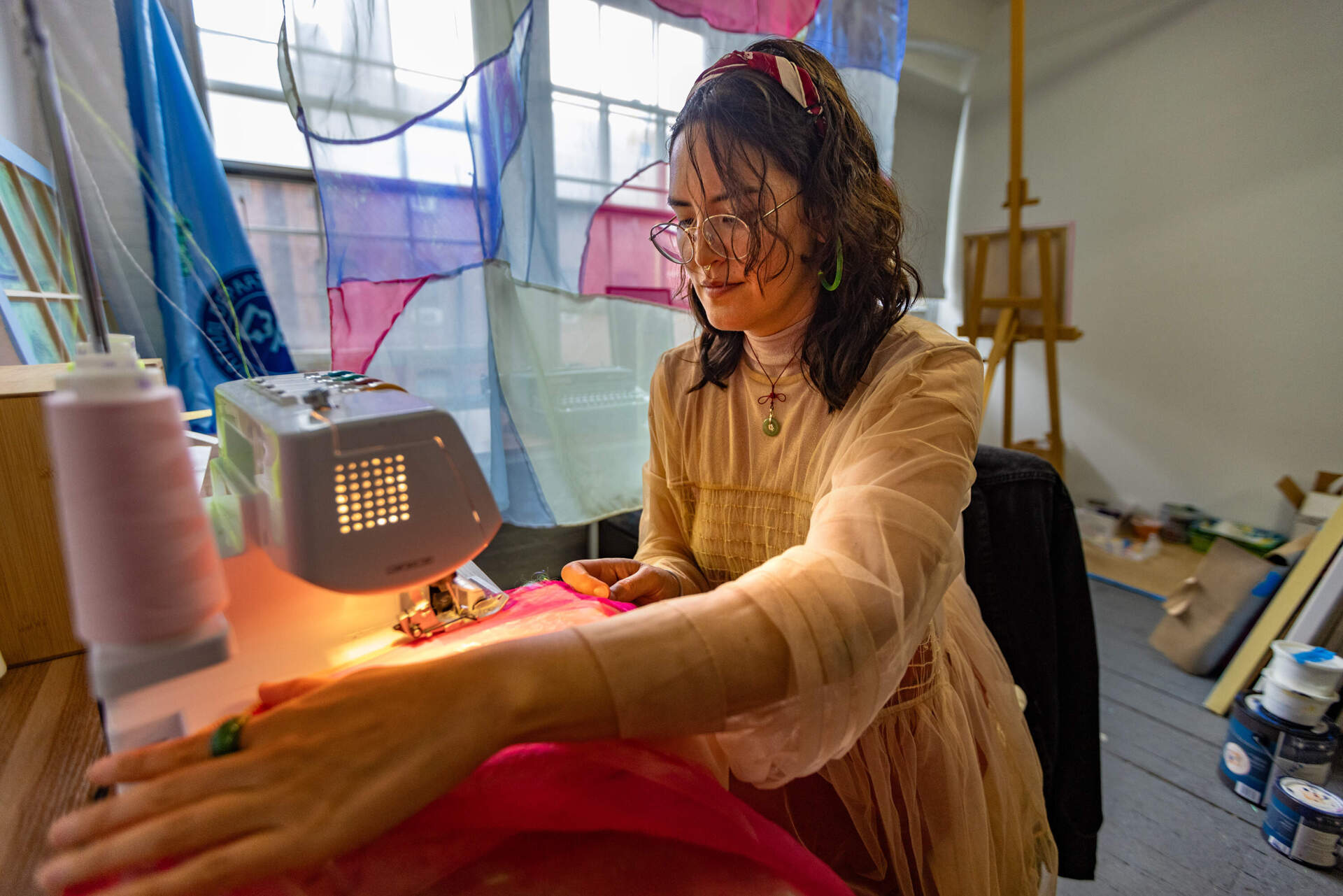
On this day, a crowd had gathered for poetry, a sound bath, singing bowls and simply visiting the beach to relax. A group of musicians created a drum circle.
The gathering was more than an art installation on a beach for bi. It’s an example of how one generation’s dreams can become another’s reality. Half a century ago, hundreds of protesters assembled on Carson Beach in response to a violent attack against Black beachgoers.
bi reflected at the end of the day about how she and others chose to honor this 50th anniversary. “I’m feeling a lot of gratitude for the people who have dreamed of a world that is more just and more peaceful because it couldn’t have existed without that protest.”
Dreams and how they shape the landscape of our city is a focus for bi, who’s also an assistant professor at Massachusetts College of Art and Design. I graduated from MassArt in 2022 after completing a master’s thesis on the topic of belonging in public spaces. bi’s site-specific installations draw attention to places’ histories and also point towards their future. In her art, she asks audiences of today to imagine the Boston of tomorrow.
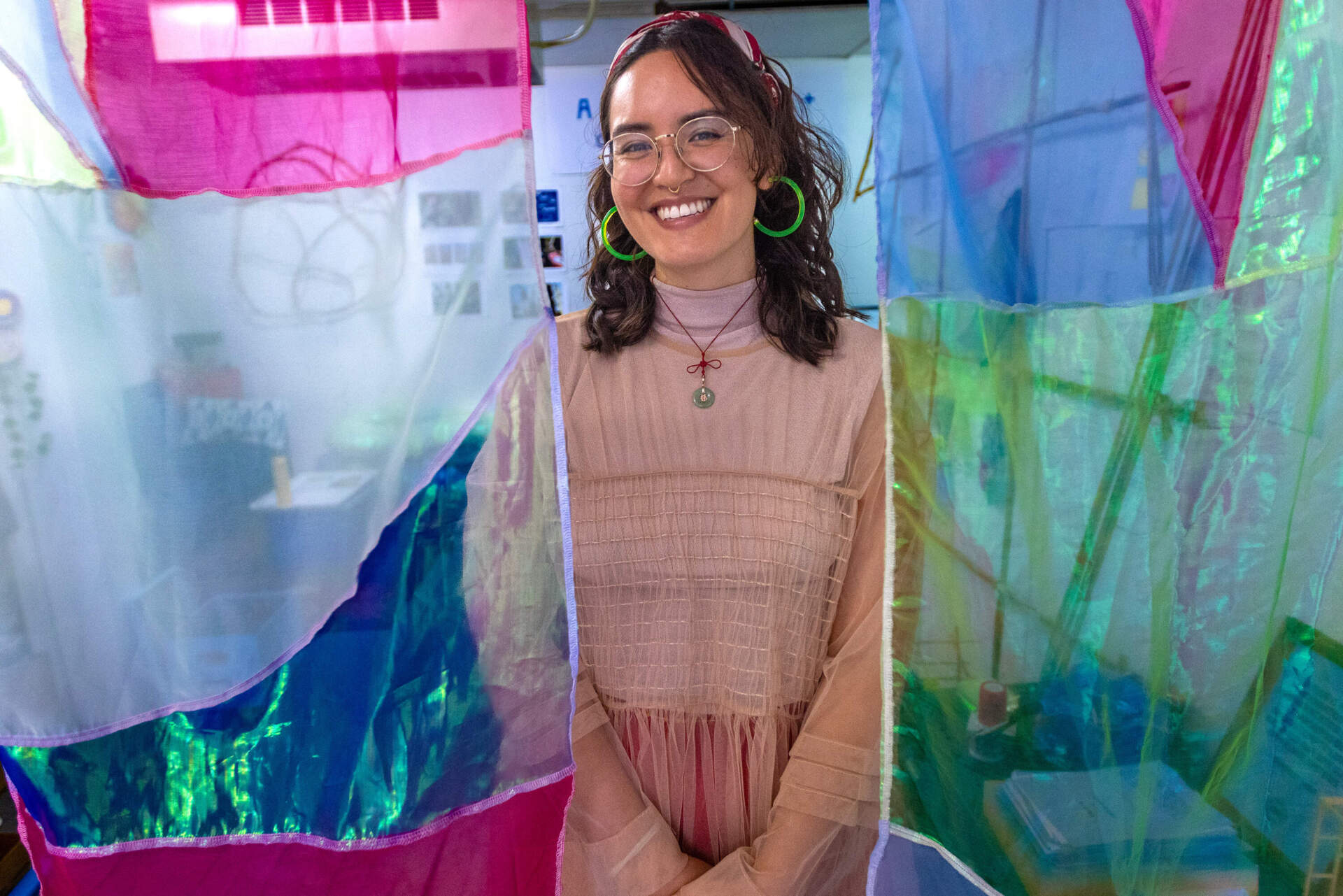
bi views her work as a part of a multi-generational collaboration with ancestors and descendants. She often asks her audience to engage with concepts of dreams, memory and belonging.
“I’m a queer, mixed race Taiwanese American interdisciplinary artist working in the public realm,” said bi, 34. “And I really care about creating the conditions for imagining new worlds with others.”
Dreaming and imagining are serious business for bi. Her recent installation, titledDepartment of Public Imagination,” took the form of a storefront pop-up located next to the Strand Theater. The concept explored how to design a public space where people felt free to reflect on their dreams in a collaborative environment. Visitors may have wondered: Is this what it would look like if the government handled the public’s dreams in a similar fashion to car registrations or general permitting?
Guests were greeted at the door by Boston poet and artist Dzidzor. She and bi are co-creators and collaborators at the Department of Public Imagination, which organizes arts events throughout Boston.
“We have been dreaming of what it would mean to not only highlight imagination in the past, but think about what our responsibility is for the future here in the present,” Dzidzor said. Stationed at a place called the Office of Memory, she handed each visitor a sheet with information on the history of various Boston landmarks as well as an object meant to help inspire new imaginations.
“I created a map where I put examples from our artifacts of spaces where imagination work, community imagination work, has physically changed the landscape of Boston,” bi said. “I really see Boston as a city of dreamers and a city of people bringing about their visions.”
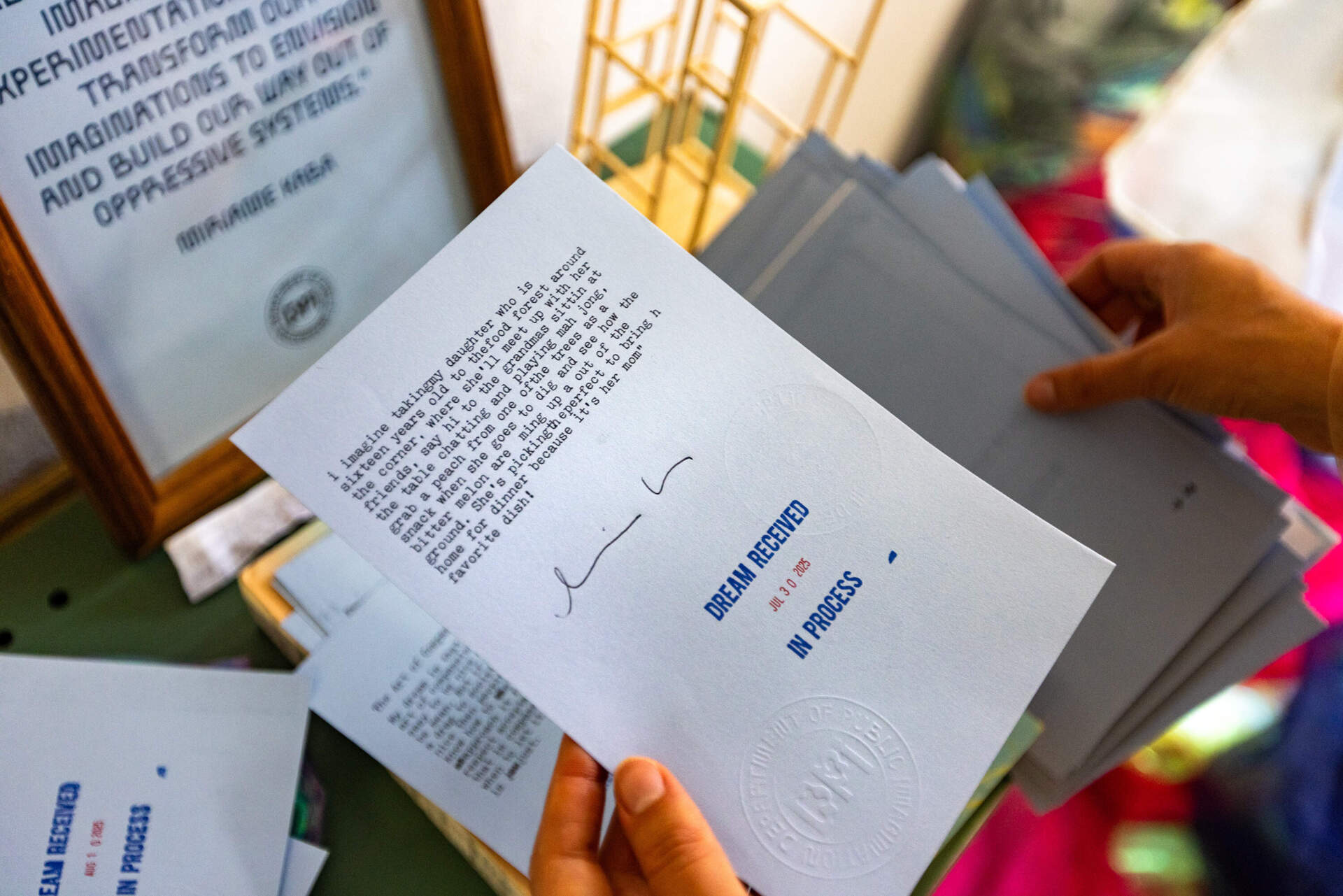
On this day, she sat behind a desk marked Imagination Records Office, where she conversed with visitors about their dreams and used an old-fashioned typewriter to transcribe what they chose to share.
Local resident Abdul “Dooley” Wilkins visited the department and shared his vision. “My imagination is … to live in a more peaceful place where people can be (and) feel safe and be at one with themselves,” Wilkins said. He then took his dream through the registration process, which included an official Department of Public Imagination stamp, an embossing and display of the document.
That was the kind of bureaucratic treatment dreams received at bi’s installation — a blend of the serious with the playful; the ephemeral with the archival. For Wilkins, it was something that inspired reflection.
“It’s awesome, man,” said Wilkins. “To have something verbally just to be spoken and received by people around. I think it’s a brilliant idea to say we can manifest things in reality, and it starts from my mind and my heart, you know?”
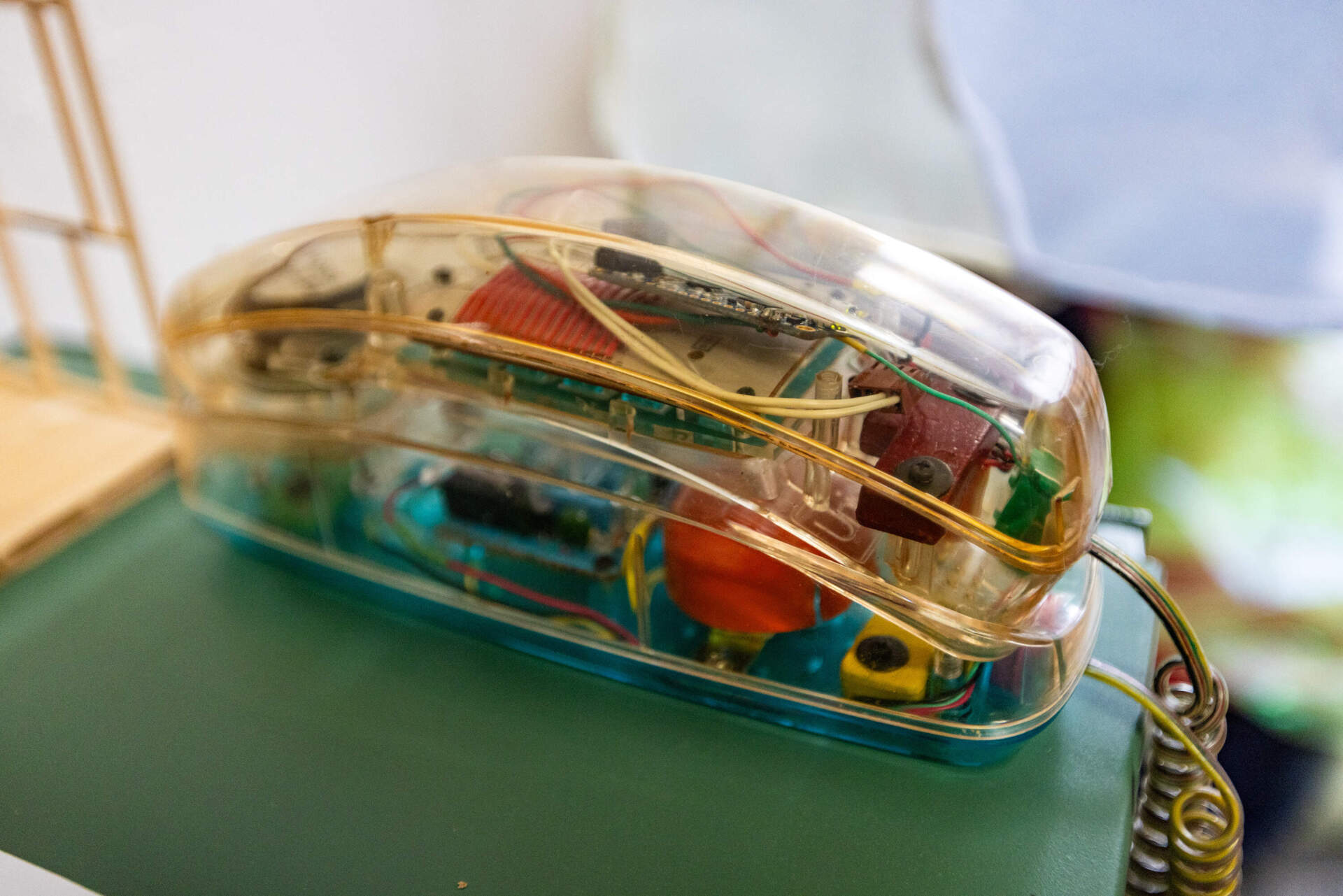
A journey through the Department of Public Imagination included several interactive installations, including a colorfully designed phone booth called the Dream Collection Portal. Inside, there’s a specially programmed phone that visitors could pick up to hear someone else’s dream. bi gathered these recordings by bringing the Dream Collection Portal to various pop-ups throughout the city.
bi’s art draws a connection between our imagination and how we shape the environments around us. As for one of bi’s biggest dreams, she’s already at work bringing it into reality.
“I dream that art and imagination work becomes highly valued in our society,” said bi. “And that every person feels that they have abundant time to dream and rest and remember and realize those visions.”
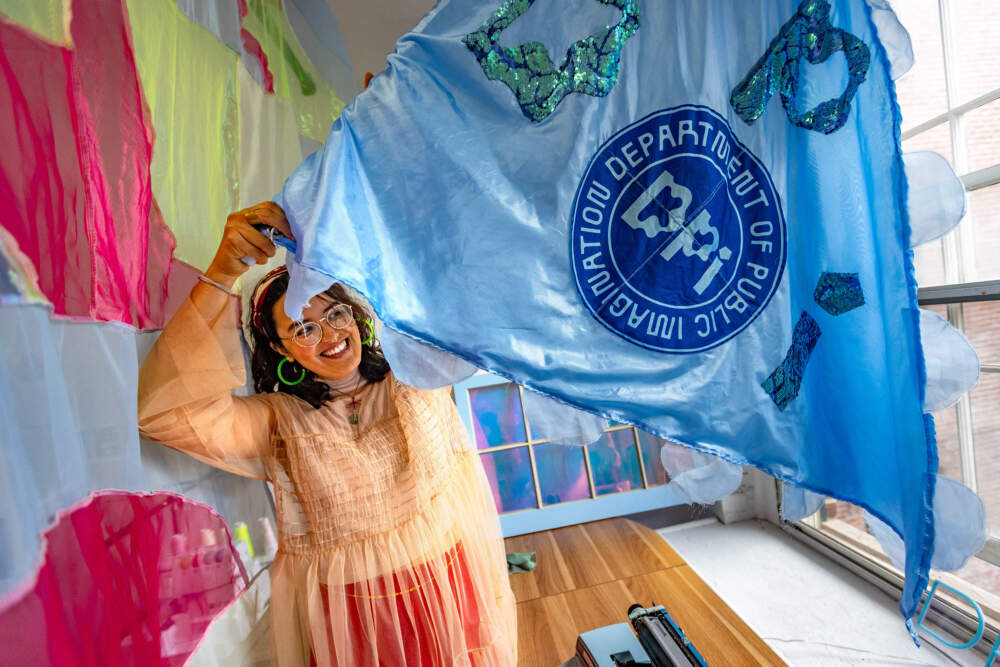
اترك تعليقاً